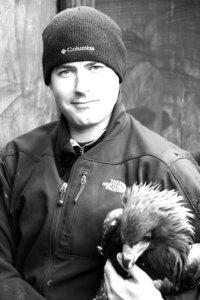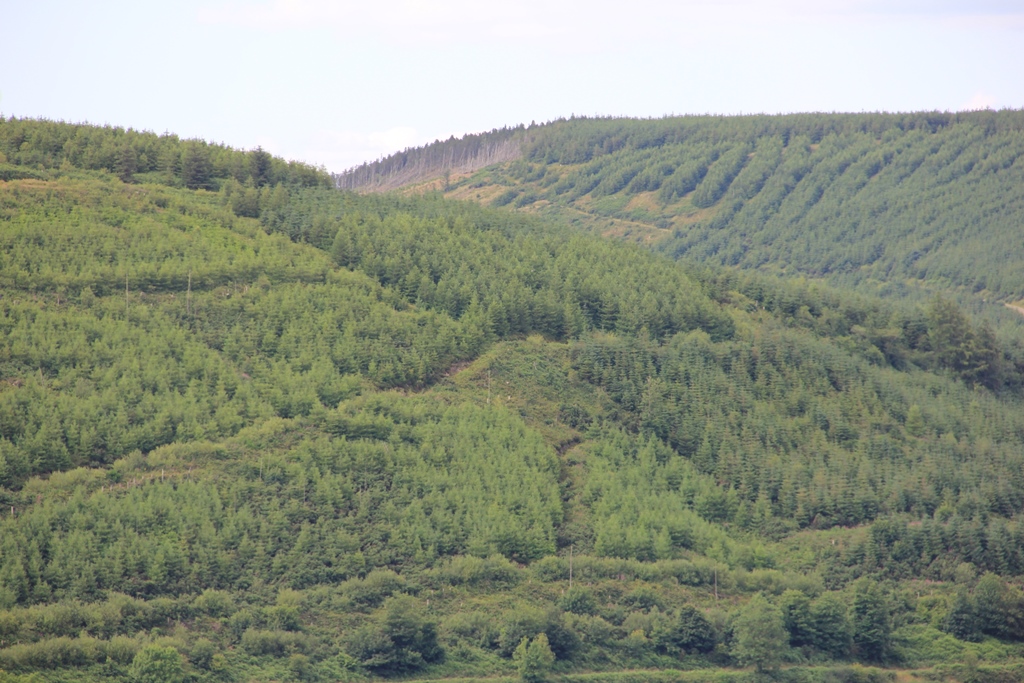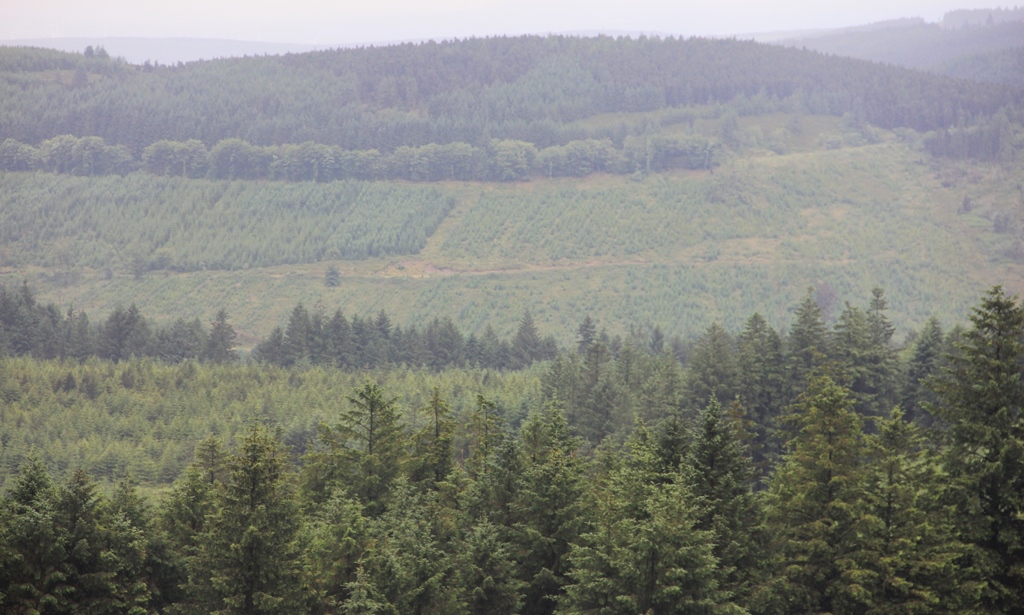 Ryan has studied Hen Harrier for over 20 years as a researcher, an accredited ecological consultant and as a contracted Raptor Expert to the National Parks & Wildlife Service. Ryan is Chairman of the Irish Raptor Study Group, Director at the Golden Eagle Trust and Project Scientist for the Hen Harrier Project, a new results-based Locally Led Agri-environment Scheme working for and with farmers in Special Protection Areas designated for breeding Hen Harrier. Views here are his own.
Ryan has studied Hen Harrier for over 20 years as a researcher, an accredited ecological consultant and as a contracted Raptor Expert to the National Parks & Wildlife Service. Ryan is Chairman of the Irish Raptor Study Group, Director at the Golden Eagle Trust and Project Scientist for the Hen Harrier Project, a new results-based Locally Led Agri-environment Scheme working for and with farmers in Special Protection Areas designated for breeding Hen Harrier. Views here are his own.
www.linkedin.com/in/ryanwilsonparr/

I wouldn’t consider this a blog, but more of a pre-emptive obituary, or a last ditched cry for help. In the Republic of Ireland, the home of the Hen Harrier is everywhere disappearing before the eyes of a generation, planted, cut to pieces, extracted, scorched to cinder, mowed down, ploughed under, and replaced. It is an ecological disaster of magnitude. The situation is desperate. Just 108 confirmed pairs at the last count.
Why should you care?… the Hen Harrier in Britain has its own problems. However, the recorded movements of Hen Harrier between Britain and Ireland demonstrate the importance of recognising the cumulative threats and pressures facing our meta-population. The Irish adventures of satellite tagged Langholm Hen Harrier ‘Miranda’ in 2013 and most recently this month, RSPB tagged ‘Skylar’ are testimony to how our collective conservation efforts should be more strongly linked.
The challenges facing Hen Harrier in Ireland are quite different. There are no short-tailed voles. The preferred prey species, the Meadow Pipit, is Red-listed and declining, like many of our other upland species, the Curlew, Red Grouse, Marsh Fritillary etc. Hen Harrier in Ireland have lower productivity rates and higher 1st year mortality than our British counterparts (72% annual mortality in first winter) – a proxy for poor prey availability / habitat.
Overall, in the Republic, the outlook is not good. There has been a recorded 15% decline in confirmed breeding pairs in the last 5yrs; a 33% breeding population decline in all areas studied in every national quinquennial survey over last 15yrs; and, a 52% decline in estimated breeding pairs over the last 40yrs. During that timeframe, over 300,000 hectares (ha) of peatland have been planted with non-native conifer plantation monoculture.

The areas targeted for forestry have been upland, less productive grazed bog, rough grassland – prime Hen Harrier country. Over time, as natural ground nesting habitats have become lost to forestry or degraded through over-grazing, burning and peat extraction, the Hen Harrier population has increasingly been forced into selecting the enclosed understorey of pre-thicket plantation forest, the availability of which has been associated with historical local and regional population recovery/flux.
Large proportions of the upland landscape in Hen Harrier breeding areas are now heavily forested. For the breeding Hen Harrier population in Ireland the temporary forested landscape has an adverse impact, supporting a successively less suitable nesting habitat and a less accessible guild of prey species during the first 10 – 12 years of a typical 40 – 60 year forest investment cycle. There is strong evidence of the edge effects of plantation forest and their role in supporting high predator densities and as sources of predator subsidies to adjacent agricultural areas. Predation is therefore a significant problem.
In terms of protection and conservation, six upland areas comprising a combined area of 167,297 ha were designated as Special Protection Areas for breeding Hen Harrier in 2007. Of this, an incredible 87,436ha (52.2%) is conifer forest. Compare this with a national average of 11% conifer forest cover!
Despite the hugely disproportionate amount of forestry in these areas, there is currently still political pressure from a minority of vested interests to plant more land in Hen Harrier SPAs. Lucrative tax payer funded forest premiums and grants are considerably higher and longer lasting than Basic Farm Payments. Low farm viability in upland areas and a looming farm succession crisis facing rural communities has also been a driver of reluctant demand for forestry over farming in certain areas. Given the planning, legal and conservation issues associated with afforestation in protected areas, a moratorium on further planting of conifers in Hen Harrier SPAs was imposed by the Forest Service in 2009.
This conflict led to a need to better understand the interactions of forestry and Hen Harrier. In 2012, the results of a forest sector led study into Hen Harrier breeding success in forested landscapes demonstrated that Hen Harrier breeding success can decrease noticeably when the percentage of second rotation pre-thicket forest in the surrounding landscape is greater than just 10%.
This 10% threshold or tipping point provide tangible evidence and a strong plausible link between the adverse population level impacts of temporary, sub-optimal, and predator rich man-managed forestry on Hen Harrier. Proof that the selection of pre-thicket forest for nesting represents an ecological trap and a long term driver of population decline.
How does this 10% value translate to the extent and demography of forest in the Hen Harrier SPAs currently and in the future?, and how can this inform conservation measures? Unfortunately there is no published data available on what proportion of the 52% forest cover in SPAs is currently 2nd rotation. However, a broad state agency review of forest projections in Hen Harrier SPAs has shown that the proportion of closed canopy forest (unsuitable for use by nesting or foraging Hen Harrier) in many SPAs is expected to increase until 2035 before forest harvest cycle projections indicate a more variable spatial diversity in forest habitat availability for Hen Harrier. However, given the legal obligation to replant after harvesting, ultimately all this existing forest will be 2nd rotation pre-thicket (selected nesting habitat proven to limit breeding success) in the future.
How is the Hen Harrier population responding to this increasingly unsuitable and sub-optimal extent of forestry in SPAs? At designation the SPA network supported 94 breeding pairs of Hen Harrier (61% of the national population). In 2017, there are just 59 (37% of the national population). This represents a 37% decline in population within the SPA network in just 12 years. The gradual and persistent degradation of the SPA network for breeding Hen Harrier in Ireland means that these SPAs now no longer contribute significantly to national population viability. The conservation crisis is so severe that there is now a greater proportion of breeding Hen Harrier outside of SPAs. Modelling data of the Hen Harrier population from both the 2010 and 2015 national breeding Hen Harrier surveys show that mortality rates are higher than productivity and the Hen Harrier population does not appear to be self-sustaining.

In addition to forestry, Hen Harrier are under threat from wind farm developments (habitat loss, displacement, and disturbance); illegal and uncontrolled burning of nest and roost sites (requirement to remove suitable Hen Harrier habitat in order to be eligible for and to maximise farm payments); and, disturbance of nest sites through peat extraction.
Maybe there is a reason why the intrepid explorers Miranda and Skylar didn’t stay in Ireland very long.
So what now!? Well without direct action, the rapid population decline of Hen Harrier in Ireland will continue, like the Curlew, slowly circling the drain.
The Hen Harrier in Ireland is uniquely tied to upland and marginal farming. Without farming there will be no Hen Harrier. The pursuit of forestry profits is not compatible with upland pastoralism or the conservation of a bird that depends on that pastoral landscape, and whose future depends on a vibrant and sustainable rural farming economy. There has been some welcome progress on supports for farmers in Hen Harrier areas with farmers able to draw down up to a maximum of €7,000 for a Hen Harrier Measure as part of annual c.€211 million investment in broad agri-environment supports. More specifically, the government has invested €25 million in a results based scheme in Hen Harrier SPAs.
In 2013, the National Parks and Wildlife Service, the statutory conservation agency, started a ‘Threat Response Plan’ aimed at determining the particular threats facing the Hen Harrier population in Ireland and identifying the conservation measures required to address these threats, as well as identifying who is responsible for implementing them and providing a time frame for delivery. What will be in the Plan is not known, however, the scientific evidence clearly and strongly advocates the urgent need for a reduction in forest cover in Hen Harrier breeding areas. Measures on wind farm development and other land uses also need to be effective in protecting and delivering improved nesting and foraging resources for the Hen Harrier. The Hen Harrier Threat Response Plan will be one of the most important conservation documents of our generation.
I hope that this blog promotes further interest in the Hen Harrier in Ireland and a wider discussion on the ecology and conservation of our meta-population.

This is also happening in Scotland with 17 farms around Langholm going to loose their tenants and forestry will take over. Again more money available to plant trees and rent out houses than for tenant farms. Like wise early planting will be good for Hen Harriers but with little FC guide lines fewer wildlife corridors and planting directly up against water courses will lead to flooding down stream especially with plough lines every 2 metres! But the Scottish government do not seem to see this happening!
I cant comment on the situation in Ireland but to suggest that there are “Little FC guidelines” is not correct. Every new scheme must be fully compliant with all 232 pages of the UK Forestry Standard. Any scheme with significant potential impacts will also require a full EIA. All schemes will have public consultation with statutory notification to RSPB, SNH etc
If you have evidence of anyone planting “directly up against water courses” then I strongly urge you to contact your local Sepa Office.
As an example of good practice, you might be interested in reading how a new forestry project close to a Golden Eagle nest site was managed http://www.confor.org.uk/media/79563/iucncarrickpressreleasedraft3jan2015.docx
Link to UKFS below
https://www.forestry.gov.uk/pdf/FCFC001.pdf/$FILE/FCFC001.pdf
Thank you, Ryan. Very insightful and very worrying. Fingers crossed for a good ‘Hen Harrier Threat Response Plan’! In the end it is all down to the necessity of preserving our ecology and sorting out the economics to do so. That’s what I’d vote for!
I am familiar with the countryside of West Cork. Forestry is on the increase in this area I think but habitat loss also seems to be occurring on a large scale from draining and artificial fertiliser being applied to rough pasture. Bulldozers are everywhere levelling the wild rocky landscape, drainage being put in and a level green sward being produced. Even small fields that currently escape the bulldozer are turning into a monoculture of bright green grass with fertiliser being applied from the back of quad bikes. These lurid green fields which were home to snipe, curlew and meadow pipit are creeping up the mountains and down to the sea. I’d be interested to know if the agricultural subsidies which are perversely driving this change can be stopped in Ireland.
With a 37% decline in the harrier population (an Annex I species) within designated SPAs over the last 12 years, taking four years to produce a government threat response plan is either incompetent or an excuse for doing nothing. The EU Commission should be asking urgent questions of the Irish government about the use of European funds for continuing afforestation in the hills.
Hi, I live in Co. Kerry, I’m in a S.P.A. I receive a grant to protect the Harrier, my farm is of very poor quality mostly heather, bog & rushes & I’m surrounded by mature forestry. Which I hate by the way. I keep pure bred Kerry cows because they’re the best for grazing the type of land I have. It’s really a hand to mouth existence, which is where I have a slight problem with people coming along & saying we must protect this bird or animal but nothing about protecting the native people living on the land because you need the likes of us to keep the land in good order & as I say we are only scraping a living off it. I would challenge anyone to swap places with me for a year & see how they would like it, not knowing if you will have the money for food at the end of each week & I’m a mile from the nearest neighbour because everyone else sold they’re land to the forestry. When we go into these schemes we also lose control of our land, there’s strangers coming in telling how to run it. people out of offices that wouldn’t know the front from the back of a cow & they also think we know nothing about the Harrier which is a total laugh. I for one grew up watching the Harrier & my father before me going back to my great great grand father. We were never consulted on what we thought may be the best way to protect them, which we should have, after all we’re the keepers of the land.
Now don’t get me wrong, I like the Harrier I see’s him several times a week Between April & September it’s mostly the Male when he’s hunting. He doesn’t seem to be afraid of me because he flies within a few yards of me & whenever I’m in the bog or meadow he passes over our head hunting, you’d see his moving from side to side scanning the ground.
My farm has a wide diversity of wildlife on it from Meadow, Sky Larks, Red Squirrels & Mountain Hares actually I don’t have to leave the house to see any of them as I have a Sun Room at front of house & when I’m sitting there everything passes it.
I also had a pair of Curlews this year, they were looking for a nesting sight, I saw them doing a sort of courtship dance in the air which was lovely to see.
I know I went on a bit too long but I wanted try to let people know how thing are form our prospective.
So Mr Ryan Wilson-Parr feel free to contact me if you wish & you are more than welcome to visit my farm anytime during the summer.
Mossie – great comment thank you.
Hi Mossie, agree 100% with absolutely everything and your experience is one that I have heard from farmers across all the Hen Harrier SPAs. The blog missed out a lot of the political and socio-economic challenges farmers have faced since 2007…such as the level of consultation during the designation process; the modulation of EU Natura 2000 funding away from farmers like yourself in the last Rural Development Programme (430million euro allocated for Natura 2000 farmers was diverted to other farm schemes); limited access to the makeshift replacement Farm Plan Scheme in the absence of the Natura2000 funds (scheme had to be funded by the tax-payer ) – only c.370 farmers got into it before the recession hit; with designation came misinformation and uncertainty over the regulations e.g what actions required consent; misinformation, penalties and implementation of land eligibility guidelines; the moratorium on forestry and subsequent inequality in potential land values between designated and non-designated land. There was a lot this blog missed, but it had to be short, specific on the conservation issue, and in keeping with the interests of most who follow Mark’s blog.
You stated that when we go into these schemes you also lose control of our land, with strangers coming in telling how to run it…. well the new Hen Harrier Project, launching before the end of 2017 is farmer led and results based. It is totally different from what you have experienced before, where the farmer decides how much or little he does. It pays differently too in that the higher quality of habitats on your farm, the higher payments the farmer can receive. Farmers are fully or partly financially supported for actions they undertake and choose themselves. No one dictates to farmers in the programme how they manage their land. The farmer knows her land best. The Project works for and with farmers to maximise their payments and rewards for improving or maintaining habitat quality. If there are Hen Harrier nesting on or in proximity to a farmers land, then that farmer and their neighbours receive bonus payments to reward them for supporting the conditions on which Hen Harrier depends. If the Hen Harrier is doing well at a SPA population level, then all farmers in that SPA also get an extra bonus financial reward.
Mossie you also stated that your land is very poor quality mostly heather, bog & rushes…well in the Hen Harrier Programme this is excellent quality habitat for Hen Harrier and as such farmers would be rewarded for those habitats. Livestock is only one product of your land, biodiversity and environmental benefits of high nature value farmland is also a product. The Hen Harrier Programme is about recognising the role of farmers and turning the Hen Harrier into an asset. I think you would be really interested in the Hen Harrier Project and if you get in touch via my email address at the top, i will give you a call and send on information and materials. I would love to call down to your farm next summer. Thanks for reading and commenting.